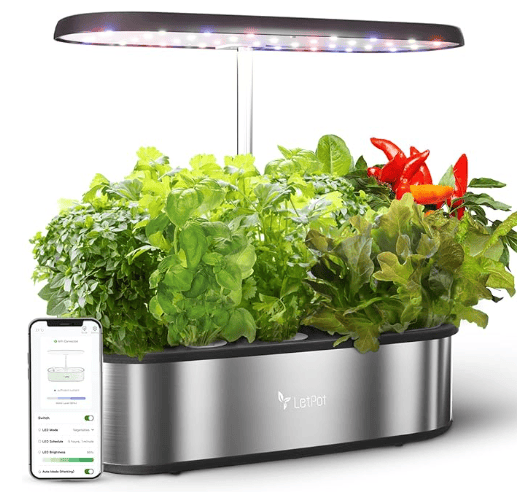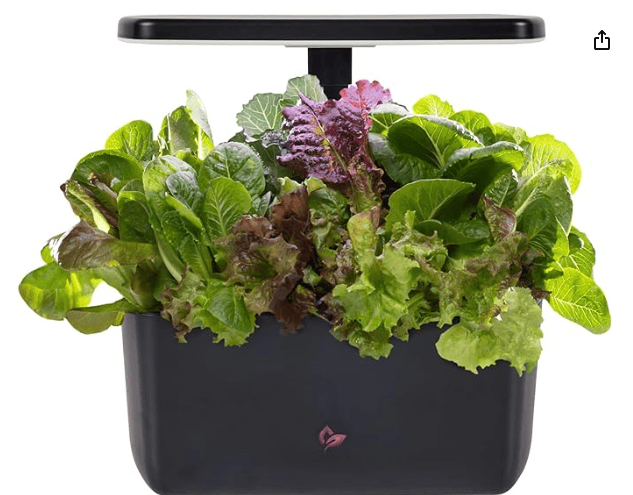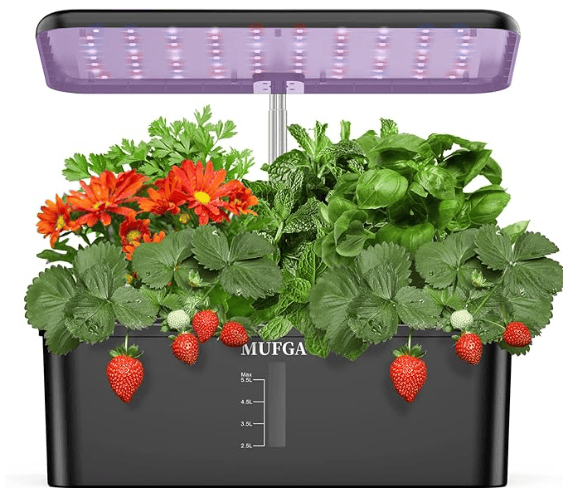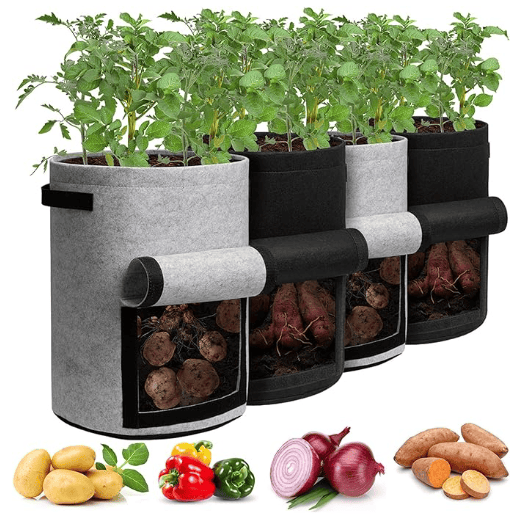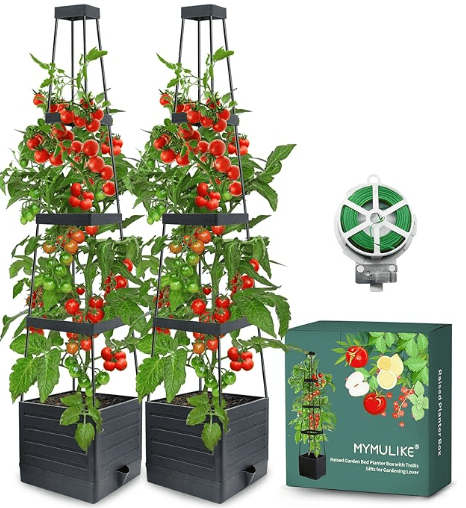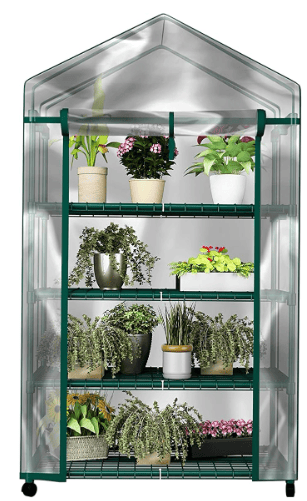How to Grow Tomatoes Indoors – Delicious Tomatoes at Home
Growing tomatoes indoors isn’t just a fun hobby; it’s also a great solution for urban gardeners and those with limited outdoor space.
With the right approach, you can cultivate juicy, fresh tomatoes right in your own home, no matter the season. This guide will walk you through the essentials—from selecting the right tomato varieties to the harvest—ensuring your indoor tomato garden thrives.
You Can Grow It!
Chapters
- Vídeo rápido sobre como cultivar tomates dentro de casa
- Principais sistemas de cultivo para jardinagem interna
- 1. Escolha a variedade certa de tomate para interior
- 2. Selecione o contêiner apropriado
- 3. Use solo para vasos de alta qualidade
- 4. Forneça luz adequada
- 5. Mantenha as temperaturas ideais
- 6. Regue regularmente
- 7. Fertilize adequadamente
- 8. Fornecer suporte
- 9. Polinize as flores
- 10. Monitore pragas e doenças
- 11. Colheita
- Inspiração: Cultivar tomates dentro de casa
- Tomate em vaso de canto
- Prateleira de janela de tomate
- Jardim de recipientes de tomate perto da janela
- Perguntas frequentes
Quick Video on How to Grow Tomatoes Indoors
Top Indoor Gardening Growing Systems
1. Choose the Right Indoor Tomato Variety
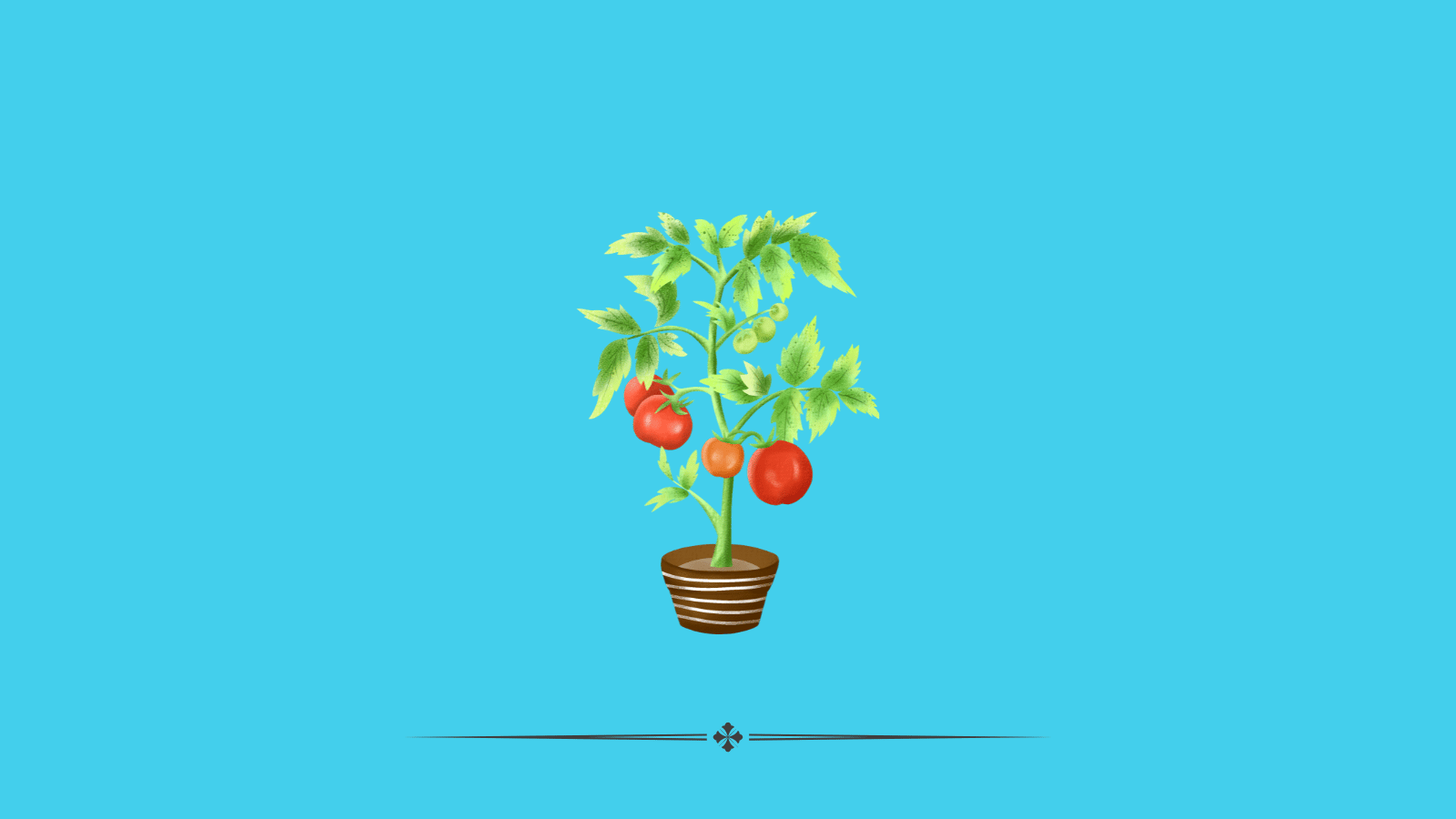
Selecting the correct tomato variety is crucial for indoor gardening. Dwarf or bush types are especially suited for container environments because they have a compact growth habit and require less space to thrive. Varieties like ‘Tiny Tim’, ‘Patio Princess’, and ‘Balcony’ are excellent choices. These are specifically bred to perform well in pots, producing a healthy yield in a confined space. They are also less prone to the diseases that can afflict larger, vining varieties when grown indoors.
2. Select the Appropriate Container
The right container can make a significant difference in the success of your indoor tomatoes. Choose pots that are at least 6-12 inches deep to accommodate the roots of your tomato plants. Ensure each pot has adequate drainage holes to prevent waterlogging, which can lead to root diseases. Larger containers are preferable because they hold more soil, which helps maintain moisture levels and reduces the frequency of watering. Each tomato plant should have its own pot to ensure it has enough space to grow without competition for nutrients and water.
3. Use High-Quality Potting Soil
High-quality potting soil is essential for growing healthy tomato plants. Use a potting mix that is light and fluffy, with good drainage and aeration properties. Avoid using garden soil, as it can be too dense and may introduce disease-causing organisms and pests to your indoor garden. A good potting mix will provide the necessary support and nutrients for your plants and will help regulate moisture around the roots, which is critical for healthy growth.
4. Provide Adequate Light
Light is a critical factor in the growth of tomato plants. Tomatoes need at least 6-8 hours of direct sunlight per day to develop properly. In indoor settings where natural light is insufficient, artificial grow lights are necessary. Install grow lights a few inches above the plants—LED or fluorescent bulbs are both effective choices. Keep these lights on for 12-16 hours per day to mimic natural daylight conditions. Proper lighting not only supports growth and photosynthesis but also helps in the development of fruits and prevents the plants from becoming leggy.
5. Maintain Ideal Temperatures
Tomatoes are sensitive to temperature fluctuations and thrive within a specific range. Maintain daytime temperatures between 65-75°F (18-24°C) and ensure that nighttime temperatures do not drop below 55°F (13°C). Cooler temperatures can slow plant growth and affect fruit set, while excessive heat can stress the plants and lead to poor fruit quality. Consider using a thermostat or a thermometer to monitor indoor temperatures closely, adjusting your heating or cooling as necessary to maintain optimal conditions for your tomatoes.
6. Water Regularly
Proper watering is key to healthy tomato plants. Check the moisture level of the soil by feeling the top inch—if it’s dry, it’s time to water. Water the plants thoroughly so that moisture reaches deep into the roots, but be careful not to overwater, as this can lead to root rot and other waterlogged soil issues. Ensure good drainage in the pots to prevent excess water from sitting at the bottom. Consistent, even watering helps prevent problems like blossom end rot and can contribute to a more flavorful harvest.
7. Fertilize Properly
Tomatoes need regular feeding to produce a bountiful harvest. Use a balanced, water-soluble fertilizer every two weeks to nourish your plants. Once the plants start to flower, switch to a fertilizer that is higher in phosphorus than nitrogen to encourage more fruits to set. Avoid over-fertilizing, which can lead to excessive leaf growth at the expense of fruit production. Following the manufacturer’s instructions for dosage and frequency ensures your plants get just the right amount of nutrients.
8. Provide Support
As tomato plants grow, they can become top-heavy and may need support to keep from bending or breaking, especially under the weight of their fruit. Use stakes, trellises, or small tomato cages to provide stability. Secure the plants loosely to these supports using soft ties; this not only helps the plant stay upright but also keeps the growing fruits off the ground, reducing the risk of disease and making them easier to harvest.
9. Pollinate the Flowers
Indoor environments lack the natural pollinators found outdoors, so you’ll need to assist your tomato plants in this process to ensure fruit production. Gently shake the flowering branches or tap on the main stem to mimic the vibration caused by bees. Alternatively, use a small paintbrush or cotton swab to manually transfer pollen from one flower to another. This will help maximize your yield by ensuring that all flowers have the chance to develop into fruit.
10. Monitor for Pests and Diseases
Keep an eye out for signs of pests and diseases, such as discolored leaves, sticky residues, or visible insects. Common indoor tomato pests include aphids, spider mites, and whiteflies. Treat infestations early with insecticidal soap or neem oil, applying according to the product instructions. Promote good air circulation around your plants by not overcrowding them and by regularly pruning to keep the airflow unhindered, which helps prevent fungal infections.
11. Harvesting
Tomatoes are ready to harvest when they are firm and have developed full color—red, yellow, pink, or whatever color your specific variety is supposed to be. Regular harvesting encourages the plant to continue producing more fruit throughout the growing season. Pick tomatoes by gently twisting them until the stem snaps from the vine, or use a pair of scissors to cut them free.
Inspiration: Growing Tomatoes Indoors
Tomato Tree in a Corner Pot
Imagine cultivating a compact tomato tree in a large decorative pot, perfectly placed in a bright corner of your room. This setup not only serves as a functional edible garden but also adds a lively botanical feature to your interior décor.
Design Concept
- Pot Selection: Choose a large, eye-catching decorative pot that complements the interior style of your room. This could be a ceramic pot with intricate patterns, a sleek modern planter with clean lines, or even a rustic wooden barrel for a more natural look.
- Tomato Tree Variety: Opt for a dwarf or patio variety of tomato plant that is bred specifically for container growing. These compact varieties still produce a plentiful yield without the sprawling growth habit of standard tomato plants, making them ideal for indoor environments.
- Location: Position the pot in a corner that receives ample sunlight for at least 6-8 hours a day. If natural light is insufficient, consider supplementing with grow lights to ensure the plant receives enough light to thrive and produce fruit.
- Soil and Nutrition: Fill the pot with high-quality potting mix rich in organic matter. Tomatoes are heavy feeders, so mix in a slow-release fertilizer at the time of planting and consider a regular feeding schedule with a balanced liquid fertilizer.
- Support Structure: Since even compact tomato plants can grow quite tall and heavy with fruit, incorporate a support structure such as a small trellis or a tomato cage into the pot. This will help keep the plant upright and support the branches once they begin producing tomatoes.
- Care and Maintenance: Regularly water the tomato plant, keeping the soil consistently moist but not waterlogged. Prune any excessive growth to maintain a neat appearance and ensure that the energy is directed towards fruit production.
Benefits
- Aesthetic Appeal: A tomato tree in a decorative pot adds vibrant green foliage and bright red fruits to your room, enhancing the space with natural beauty.
- Fresh Produce: Enjoy the taste and nutritional benefits of home-grown tomatoes, fresh from the vine and free from pesticides.
- Educational Opportunity: This setup can serve as a practical educational tool for children or gardening beginners, demonstrating the process of plant growth and food production in an accessible way.
This concept of growing a tomato tree in a corner pot is a fantastic way to merge functionality with aesthetic appeal, bringing a piece of the garden indoors and adding a fresh, vibrant touch to your living space.

Tomato Window Shelf
Imagine installing a small shelf in front of your bedroom window specifically designed to hold a tomato plant. This setup not only utilizes space efficiently but also adds a touch of greenery to your personal space, allowing you to wake up to the sight of growing tomatoes right outside your window.
Design Concept
- Shelf Design: Choose a shelf that matches the decor of your bedroom, whether it’s a sleek, minimalist ledge or a rustic wooden platform. Ensure that the shelf is sturdy enough to support the weight of a potted tomato plant, including its soil and water.
- Tomato Plant Choice: Opt for a compact variety of tomato suitable for container gardening. Cherry or grape tomatoes are ideal for their small size and prolific fruit production. These varieties also tend to be more adaptable to the varying conditions of indoor environments.
- Location and Light: The shelf should be securely mounted at a height that maximizes exposure to sunlight, as tomatoes require several hours of direct sun each day. South-facing windows are typically best, but any window that receives ample sunlight can work.
- Pot and Soil: Use a high-quality pot with good drainage holes to prevent waterlogging. Fill the pot with a nutrient-rich potting mix designed for vegetable gardening to support healthy growth and abundant fruiting.
- Watering and Care: Install a drip tray under the pot to catch any excess water, keeping your floor and windowsill clean. Water the plant regularly to maintain evenly moist soil, and consider adding a water-soluble tomato fertilizer every few weeks during the growing season to ensure your plant gets all the nutrients it needs.
- Additional Features: Consider adding a small trellis or staking the plant to help support the weight of the tomatoes as they grow. This will prevent the stems from bending or breaking under the weight and will keep your plant looking tidy and well-managed.
Benefits
- Aesthetic Enhancement: The presence of a vibrant green tomato plant adds a natural decorative element to your bedroom, enhancing the room’s ambiance.
- Fresh Produce: Enjoy the convenience and delight of harvesting fresh tomatoes from your own bedroom window.
- Educational Value: For families with children or for anyone interested in gardening, this setup provides a practical and visible demonstration of plant growth and care.
This tomato window shelf project is a wonderful way to integrate a bit of gardening into your daily living environment, merging functionality with the pleasure of growing your own food.
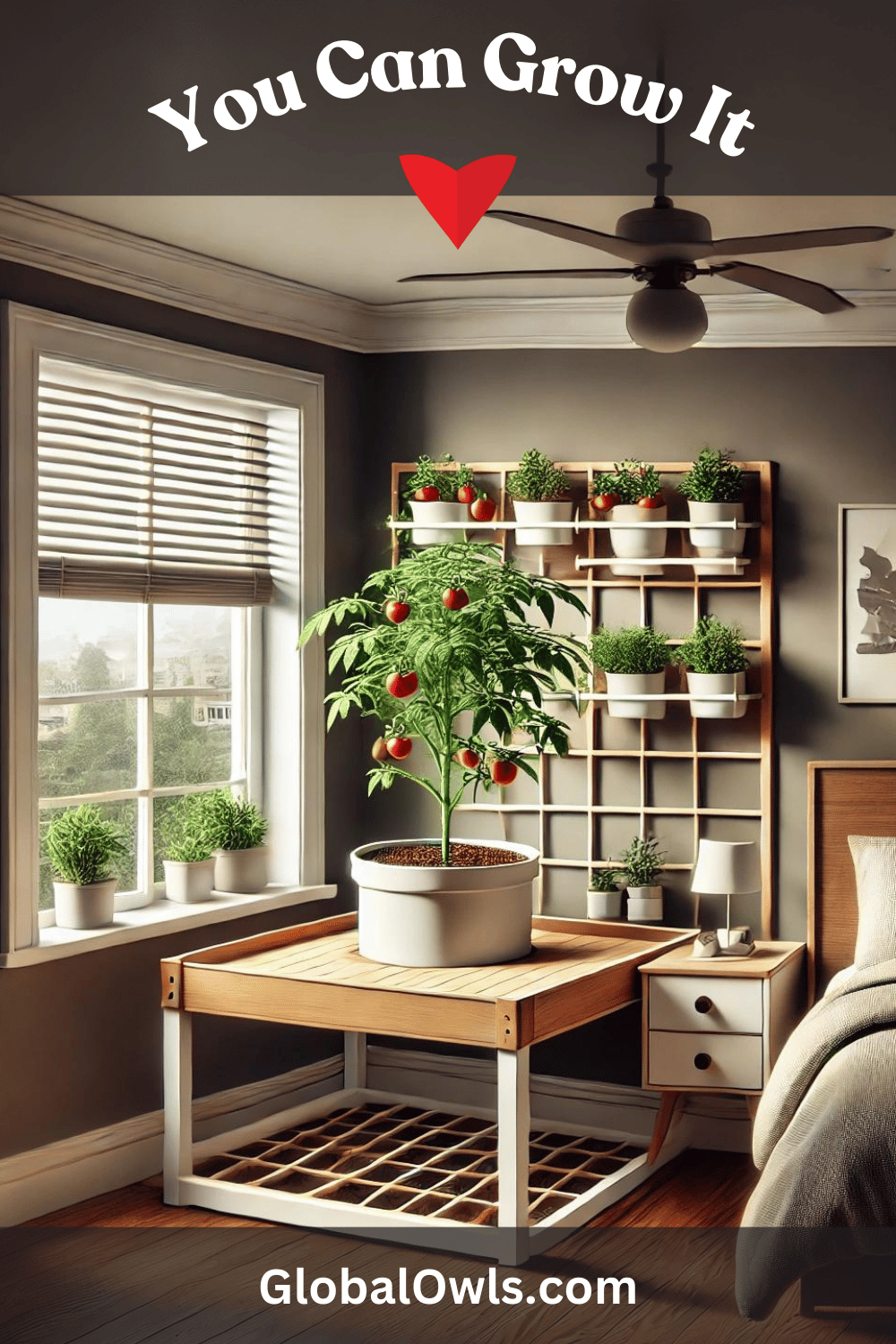
Tomato Container Garden by the Window
Imagine setting up a container garden by the window, utilizing a low bench or table to line up several containers of tomato plants. This arrangement not only maximizes sunlight exposure for optimal growth but also creates a visually appealing display of greenery and ripening tomatoes.
Design Concept
- Bench or Table Selection: Choose a low bench or table that fits comfortably in front of your window, ensuring it is sturdy enough to support multiple containers. The material can be wood for a natural look, metal for a modern touch, or any other durable material that complements your interior decor.
- Container Selection: Use uniform containers for a cohesive look or mix and match pots of different sizes and colors for a more eclectic style. Ensure each container has adequate drainage to prevent waterlogging.
- Tomato Varieties: Select several varieties of tomatoes to grow, such as cherry tomatoes, heirlooms, or dwarf varieties suited for container gardening. This will not only provide a diverse harvest but also create a dynamic visual display as different tomatoes ripen at varying times.
- Placement for Sunlight: Position the bench or table in an area that receives plenty of direct sunlight for at least 6-8 hours a day, as tomatoes thrive in full sun. If sunlight is limited, consider supplementing with grow lights to maintain healthy plants.
- Soil and Fertilization: Fill the containers with high-quality potting mix and add a slow-release tomato-specific fertilizer to encourage robust growth and fruiting. Regularly check the soil moisture and keep it consistently moist without overwatering.
- Additional Support: Install small stakes or tomato cages within the containers to support the plants as they grow and become laden with fruit. This will help keep the garden tidy and prevent branches from breaking under the weight of the tomatoes.
Benefits
- Aesthetic Appeal: A row of lush tomato plants by the window not only beautifies the space but also brings a piece of nature indoors, enhancing your living area with vibrant green leaves and bright red fruits.
- Fresh Produce: Enjoy the convenience and pleasure of harvesting fresh tomatoes right from your window, perfect for cooking or fresh salads.
- Educational Opportunity: This setup provides a visible and practical way to learn about the growth and care of tomato plants, making it ideal for garden enthusiasts of all ages.
Creating a container garden by the window for tomato plants combines functionality with aesthetic appeal, providing a lively and productive addition to any home.
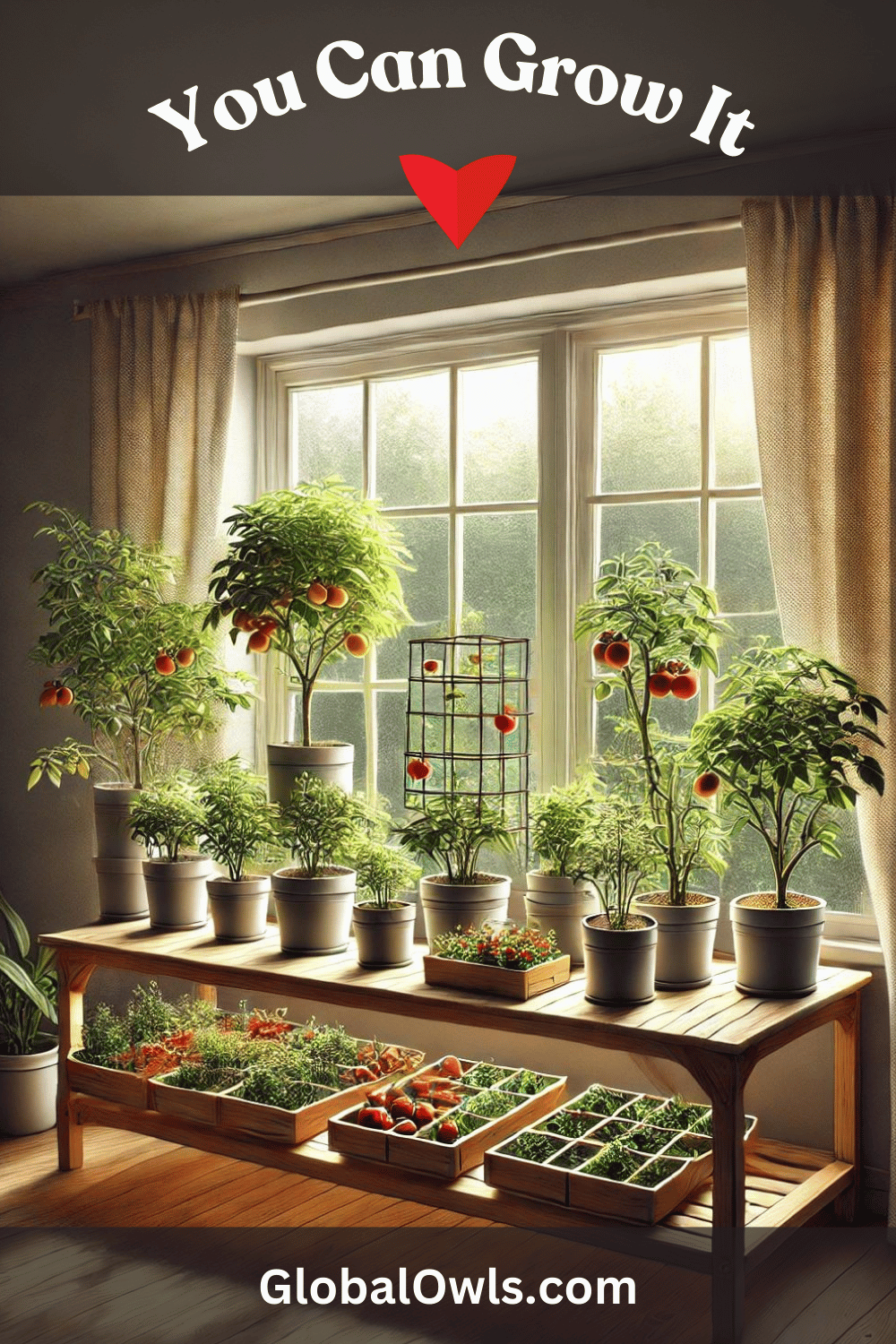
Conclusion
Indoor tomato gardening can transform your home into a lush, productive space and provide you with fresh produce right at your fingertips. By carefully selecting the appropriate varieties, providing adequate light, and maintaining the right care regimen, you can enjoy a bountiful harvest of tomatoes any time of the year. Remember, the key to successful indoor gardening is understanding the specific needs of your plants and creating the best possible environment for them to flourish.
FAQ
What are the best tomato varieties for growing indoors?
Dwarf and bush varieties like ‘Tiny Tim’, ‘Patio Princess’, and ‘Balcony’ are ideal for indoor environments due to their compact size.
How big should the pot be for indoor tomatoes?
Choose a pot that is at least 6-12 inches deep and has good drainage holes.
What type of soil is best for indoor tomatoes?
Use a high-quality potting mix that drains well. Avoid garden soil as it may contain pathogens and is too heavy.
How much light do indoor tomatoes need?
Tomatoes require at least 6-8 hours of direct sunlight daily. If natural light is insufficient, supplement with grow lights for 12-16 hours a day.
What temperature should indoor tomatoes be grown at?
Keep daytime temperatures between 65-75°F (18-24°C) and nighttime temperatures above 55°F (13°C).
How often should I water indoor tomato plants?
Water when the top inch of soil feels dry. Be thorough, but avoid overwatering to prevent root rot.
What type of fertilizer should I use?
Start with a balanced, water-soluble fertilizer every two weeks. Once flowers appear, switch to a phosphorus-rich fertilizer to encourage fruiting.
Do indoor tomato plants need to be pruned?
Yes, pruning helps increase air circulation and light exposure, which can improve yield and reduce disease risks.
How do I pollinate indoor tomato plants?
Manually assist pollination by gently shaking the flowering branches or using a small brush to transfer pollen between flowers.
How can I support indoor tomato plants as they grow?
Use stakes, trellises, or small cages to support plants and prevent branches from breaking under the weight of the fruit.
What common pests should I look out for?
Watch for aphids, spider mites, and whiteflies. Treat infestations with insecticidal soap or neem oil.
How do I know when tomatoes are ready to harvest?
Harvest when tomatoes are firm and fully colored according to their variety.
Can I grow tomatoes indoors year-round?
Yes, with adequate light and temperature control, tomatoes can be grown indoors throughout the year.
How do I prevent diseases in indoor tomato plants?
Ensure good air circulation, avoid overhead watering, and keep the foliage dry. Remove any diseased leaves promptly.
What is the best way to water indoor tomatoes?
Water deeply and directly at the soil level to avoid wetting the foliage, which can lead to fungal diseases.
Can I use LED lights for growing tomatoes indoors?
Yes, LED grow lights are effective for tomatoes as they provide sufficient light intensity and can be more energy-efficient than other types.
How long does it take for indoor tomatoes to fruit?
Depending on the variety, tomatoes can take anywhere from 60 to 80 days from planting to reach harvest.
Do indoor tomatoes taste different from outdoor tomatoes?
Indoor tomatoes can taste just as delicious as those grown outdoors, although flavors might vary slightly due to different growing conditions and varieties.
How can I increase the yield of my indoor tomato plants?
Optimize light exposure, maintain consistent watering and fertilizing schedules, and ensure proper pollination.
What are some challenges of growing tomatoes indoors?
Limited space, insufficient light, and controlling the environment (temperature and humidity) are common challenges, but these can be managed with careful planning and equipment.
How do I choose the right grow lights for tomatoes?
Opt for full-spectrum LED grow lights that cover the entire light spectrum needed for both vegetative growth and fruiting.
What humidity levels are best for indoor tomatoes?
Aim for a humidity level between 40-60%. Too much humidity can promote fungal diseases, while too little can stress plants.
How can I make my own potting mix suitable for tomatoes?
Mix equal parts peat moss, perlite, and compost to create a light, well-draining potting mix perfect for tomatoes.
Can I reuse potting soil for growing tomatoes?
Yes, but it’s best to refresh the soil by adding new compost or balanced fertilizer to replenish nutrients.
What should I do if the leaves of my tomato plants start turning yellow?
Yellow leaves can be a sign of overwatering, nutrient deficiency, or poor light. Adjust care accordingly.
How often should I check for pests on my indoor tomato plants?
Inspect your plants weekly for signs of pests, focusing on the undersides of leaves where bugs often hide.
Can I transplant outdoor tomato plants indoors?
Yes, but they must be gradually acclimatized to indoor conditions and checked thoroughly for pests before moving indoors.
What spacing is needed between indoor tomato plants?
Keep at least 12-24 inches between plants to ensure adequate air circulation and light exposure.
How can I increase fruit size in indoor tomatoes?
Ensure adequate nutrition, particularly phosphorus and potassium, and regularly prune excess foliage to direct energy to fruit development.
What type of containers can I use for growing tomatoes indoors?
Besides traditional pots, you can use fabric grow bags, which promote air pruning and better root health.
Can coffee grounds be used as fertilizer for indoor tomatoes?
Coffee grounds can add organic matter to the soil, but use them sparingly as they can also increase soil acidity.
How do I deal with tomato blossom drop indoors?
Maintain stable temperatures and humidity, and avoid abrupt changes in watering and fertilization to prevent blossoms from dropping.
Is it necessary to use organic fertilizers for indoor tomatoes?
While not necessary, organic fertilizers can enhance soil health and reduce chemical inputs, leading to healthier plants.
How do I manage tomato plant height indoors?
Use pruning techniques to control growth and consider using determinate (bush-type) varieties that naturally have a compact growth habit.
Can I grow tomatoes indoors in winter?
Yes, with proper light and temperature control, tomatoes can be successfully grown indoors during winter.
What are some companion plants for tomatoes in indoor settings?
Basil, chives, and mint can be grown alongside tomatoes to help repel pests and enhance growth.
How should I adjust watering for tomatoes in different growth stages?
Increase watering as the plant grows larger and begins to fruit, ensuring the soil remains consistently moist but not waterlogged.
Can I propagate tomato plants from cuttings for indoor growing?
Yes, tomato cuttings can root easily in water or soil, providing a quick way to propagate new plants.
How do I prevent leggy growth in indoor tomato plants?
Ensure sufficient light intensity and duration, and consider using a fan to simulate a gentle breeze, which can encourage sturdier plant growth.
What is the best way to store harvested tomatoes for longer shelf life?
Store tomatoes at room temperature away from direct sunlight to maximize flavor and longevity. Avoid refrigeration, which can reduce flavor and texture.
